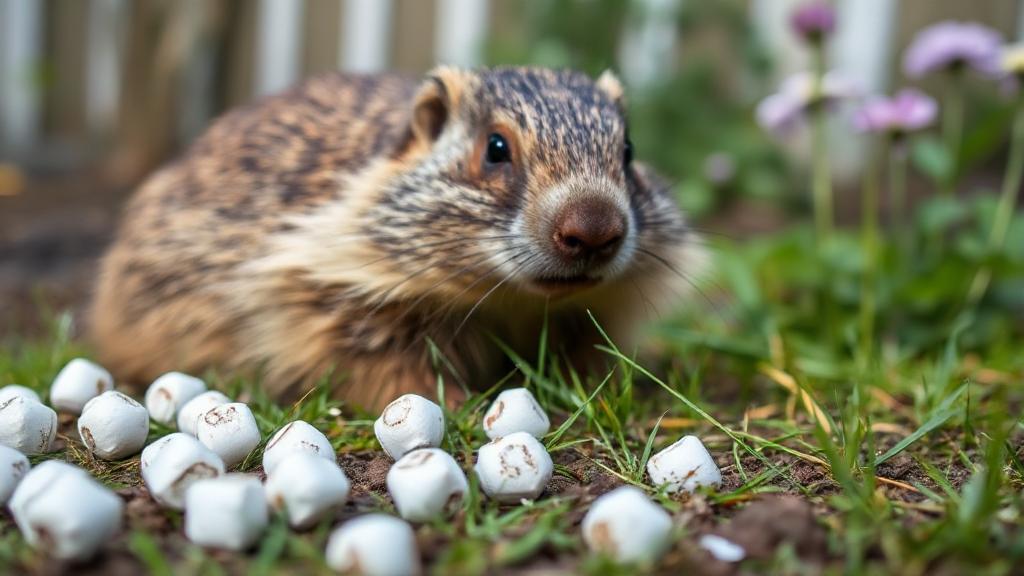The Science Behind Mothballs and Their Use Against Groundhogs
Mothballs contain either naphthalene or paradichlorobenzene, chemicals that sublimate (turn directly from solid to gas) at room temperature. While their strong odor is primarily designed to repel moths and other fabric pests, some people consider using them to deter groundhogs, also known as woodchucks.
Effectiveness and Limitations
The effectiveness of mothballs as a groundhog deterrent is questionable for several reasons:
- Limited Range: The odor may not cover enough area to effectively repel groundhogs
- Adaptation: Groundhogs may become accustomed to the smell over time
- Strong Instincts: Their natural urges to burrow and feed may override any deterrent effect
Safety Concerns
The Environmental Protection Agency (EPA) warns against using mothballs outdoors due to serious risks:
- Toxic to humans and pets
- Can contaminate soil and groundwater
- Illegal to use as a pesticide outdoors
- Harmful to beneficial garden wildlife
Effective Alternatives
Physical Barriers
Installing proper fencing is the most reliable method for groundhog control:
- Bury fence 12 inches deep
- Extend 4 feet above ground
- Bend top portion outward at 45-degree angle
- Use heavy-gauge wire mesh (1/2 inch or smaller)
Natural Repellents
Several safer alternatives have shown promise:
-
Plant-based deterrents
- Lavender
- Mint
- Rosemary
- Oregano
- Chamomile
-
Environmental modifications
- Remove brush piles
- Clear tall grass
- Eliminate food sources
- Secure compost bins
- Remove fallen fruit
Modern Solutions
Technology offers humane options:
Professional Solutions
When DIY methods prove insufficient, consider working with a certified wildlife control operator. These professionals can implement integrated pest management strategies while ensuring compliance with local regulations.
Environmental Impact
Chemical deterrents like mothballs can have far-reaching effects:
| Impact Area | Consequences |
|---|---|
| Soil | Chemical contamination |
| Water | Groundwater pollution |
| Wildlife | Secondary poisoning |
| Plants | Growth inhibition |
Seasonal Considerations
Timing groundhog control efforts is crucial:
- Spring: Focus on prevention before breeding season
- Summer: Maintain barriers and deterrents
- Fall: Remove food sources before hibernation
- Winter: Seal potential den sites
Community Approach
Working with neighbors can enhance control efforts:
- Share successful strategies
- Coordinate barrier installations
- Report unusual activity
- Maintain consistent deterrent practices
For persistent problems, seeking professional assistance may be the best course of action. For more information on dealing with groundhogs, visit resources like the National Wildlife Federation or consult with local wildlife experts.
